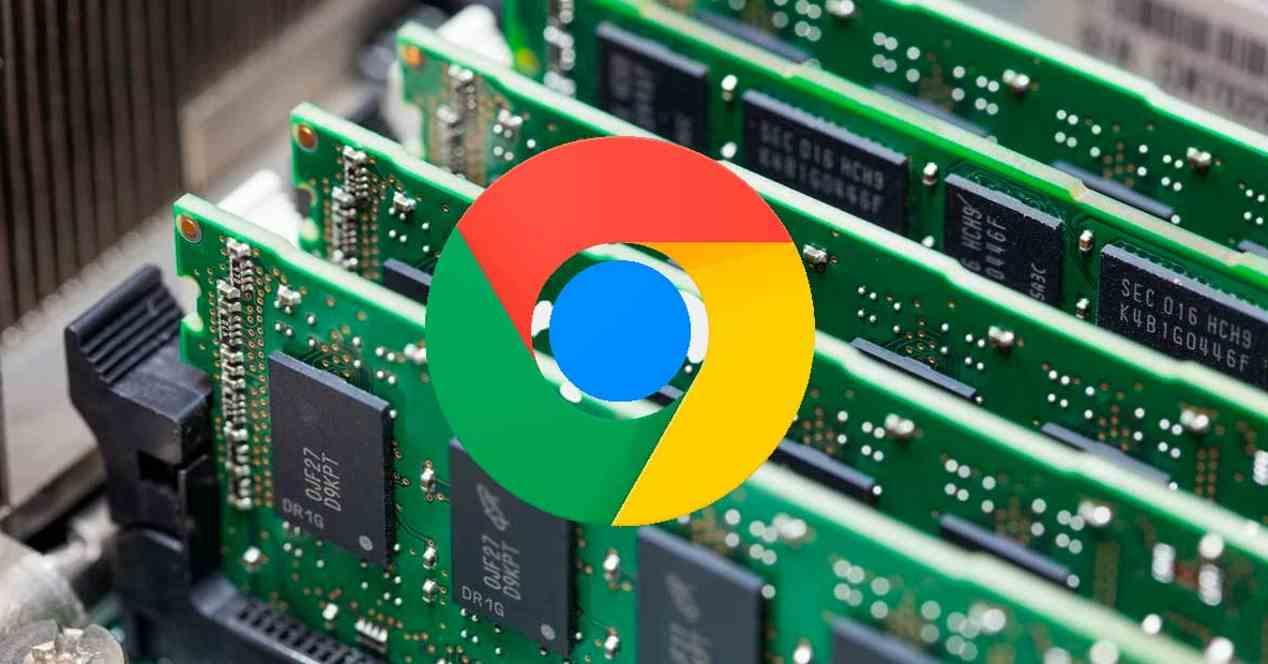We believe we don’t need to tell you that good habits are important. We say this because regardless of how the operation of a web browser affects the hardware of our PC, we must also take into account that the improper use of these supposes a considerable loss of performance. So first of all and before explaining to you the reason why applications like Google Chrome consume so much RAM, we are going to give you some simple advice that anyone can follow.
The first is that you have to get used to work with a few tabs. Since in the same way that you don’t leave the lights in your house, you shouldn’t leave more tabs open when using Google Chrome. The second is that you need to uninstall all extensions that you are not going to use nothing from the browser and the only thing they do is consume meaningless resources.
Why does Google Chrome consume so much RAM?
For starters, each of your web browser’s tabs is itself an instance of the application with all the general processes. Which are not limited only to the page, but also to the different extensions that we have active in the browser. However, this would mean a huge waste of CPU resources. Fortunately, the operating system already takes care of prioritizing windows in the foreground. That is, the ones the user interacts with, but leave the rest pending. So, each Google Chrome tab takes up RAM space.
Wouldn’t that be dumping the data to the HDD or SSD and recovering it as needed? The act of waking an application from sleep mode, temporarily dumping it to the hard disk and recovering it again not possible due to slow magnetic disk drives and how bad mass requests take your data by their nature. Let’s not forget that they only have one head to access the platter on the disc. Flash memories such as SSDs and eMMCs allow multiple accesses at the same time, but their write cycles are limited and this ends up limiting its useful life. Especially, causes the SLC cache to be exhausted faster.
Where then do we leave the information of the browser tabs that are open? Well, given the storage limits, which is done is to leave the data in RAM. They are not processed by the CPU of our PC and therefore they do not use its resources, but they are there, in a part of the memory, causing each time nWe need more RAM for Google Chrome.
Containment and access to RAM
When we talk about RAM conflict, we are referring to what happens when two or more different processes they want to access the same resource at the same time. Which has the preference of the two? Will the data modified by the first process be valid for the second? What we need to understand is that when we talk about resources, we are referring to specific data in a set of specific memory cells.
So, instead of having one RAM memory chip in our PC’s memory, we have several. The CPU memory controller that is responsible for accessing it can access different chips at the same time. And even to different sections of the same chip, called banks. Applied to web browsers, this means that the same data is replicated in the different banks to increase the speed of access to information and avoid disputes.
Therefore, the browser consumes so much memory, because to speed up data access, it gives each tab of the web browser a portion of the memory space. To note, the controversy is compounded when we use only one memory module in our system. When more modules there are not only more RAM chips and with them more memory banks, but also more access channels.
Our advice? Google Chrome needs more RAM on your PC
Unless your computer is an ultralight laptop that uses LPDDR memory, which is soldered to the board and not to memory expansion slots. Then you should have no problem installing additional RAM on your PC. Also, as you may have deduced from the previous section, if the web browser does not have enough RAM, then begin accessing resources already available
That’s why we decided to make a small selection of the best RAM memory modules on the market so that the web browser works properly and does not slow down your PC.
Corsair Vengeance LPX DDR4
Today having 16 GB is the minimum we recommend for your PC, which is why the kit Corsair Vengeance LPX, Comprised of two 8GB DDR4-3200 memory modules, each with an included heatsink, it’s among our top recommendations. It’s ideal memory for both Intel Core up to the twelfth generation, if you have a DDR4 compatible card, and AMD Ryzen up to the 5000 series.
Crucial RAM CT8G4SFRA32A
Unlike the previous case, it is possible that you already have a RAM memory socket occupied by 8 GB of memory. It is common in many pre-built PCs to cut costs by placing a single standard RAM module. Since the most widely used today is DDR4 at standard speed, we have chosen the module Crucial CT8G4SFRA32A of 8 GB.
G.Skill F4-3600C16D-32GTZNC Trident Z
Our recommendation is clear, if 16 GB is the minimum we recommend, then 32 GB is the maximum to ensure the maximum performance possible so that Google Chrome or the web browser we use has all the storage available. Like the other modules we have chosen, the Trident G.Skill F4-3600C16D-32GTZNC Z is also DDR4, as it is the most common type of memory used by most of our readers today.
Table of Contents










